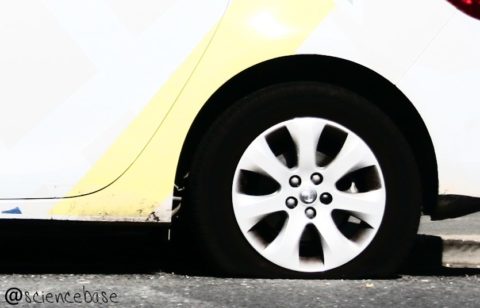Making the electronics industry green
 A new electrochemical process for silicon extraction could make large-scale production of this widely used material more environment friendly, according to chemists in China.
A new electrochemical process for silicon extraction could make large-scale production of this widely used material more environment friendly, according to chemists in China.
Silicon has an essential role in the world of electronics, being familiar in countless components from microelectronic silicon chips and optical fibres to large solar panels. It is also employed in the production of silicones, which are used in everything from bathroom sealant to cosmetic augmentation materials. Silicon even finds a role in alloy production.
Industry generally uses a straightforward reduction method to produce elemental silicon starting with silicon dioxide (SiO2 in the form of quartz). Carbon is the reductant and the process is carried out at 1700 Celsius. Carbon dioxide is the by-product as oxygen is released from the silica. According to Nottingham University’s George Chen currently a Specially Invited Professor in the College of Chemistry and Molecular Science at the Wuhan University in China, this process was used to produce about 4.1 million tonnes of silicon world-wide in 2002, with a corresponding release of 6.5 million tonnes of the greenhouse gas carbon dioxide into the atmosphere.
Chen and his colleagues, Xianbo Jin, Pei Gao, Dihua Wang, and Xiaohong Hu, believe that a more environment friendly approach should be attainable using electrochemical reduction rather than the conventional energy-hungry carbothermal process. “The old-fashioned charcoal technology should be replaced by a more advanced process from the environmentalist viewpoint,” the researchers say.
Electrolytic production of silicon was first carried out as long ago as 1854 by French chemist Etienne Henri Sainte-Claire Deville (1818-1881). A purity level of 99.999% has since been claimed by GM Rao and colleagues using fluorosilicates in a molten fluoride. In the early 1980s, however, results began to suggest that silica would be the ideal raw material, but high temperatures would be needed to make these processes work. The Wuhan researchers have now revealed a new electrochemical technique, which they claim will become viable for the large-scale production of silicon, because it avoids the high energy costs and reduces the carbon dioxide emissions considerably.
For the electrochemical extraction of silicon, Chen and his team took the approach of using silicon dioxide itself as the material for the negative electrode (cathode). They also opted to use molten calcium chloride as the best electrolyte for the job. Calcium chloride is well known as an electrolyte for electrochemical reduction of metal oxides at high temperatures. Sharp-eyed readers will have spotted the potential flaw in their arrangement, however. Silicon dioxide is, of course, an electrical insulator. Nevertheless, the researchers persisted with their idea and found in initial tests that conversion of quartz to elemental silicon does in fact occur at the three-phase boundary between the silicon dioxide, the electrolyte, and the flattened end of the tungsten wire that is used to connect the electrode to the circuit. This provides enough impetus for the electrochemistry to kick in properly as the silica is gradually converted to conducting silicon.
Theoretically, says the team, the reaction should eat its way through the entire silica electrode. However, the researchers found that in practice only a small area around the tungsten plate is in fact converted. They explain this in terms of the physical characteristics of the electrolytic melt – it simply cannot penetrate sufficiently deeply into the newly formed silicon layer on the surface of the silica electrode. This has the inhibiting effect of preventing further formation of the three-phase boundary and so the electrochemical reaction grinds to a halt.
Determined to make the process work though, Chen and his co-workers have now found a practical solution. Instead of using a solid quartz electrode, they have switched this for silicon dioxide powder that has been pressed into thin pellets and then sintered. The resulting electrode is, of course, then porous enough to allow the electrolytic melt to penetrate more deeply into the material of the electrode. Indeed, the particles, just a few micrometers across, are much more effectively converted to silicon powder by the electrolysis process than in the solid silica electrode. The use of X-ray diffraction provided the researchers with assurance of the purity of the silicon they were producing.
In terms of industrial application, high purity, low-energy, and reduced carbon dioxide emissions will all be rather desirable properties of the new silicon-production process. Moreover, as bulk quartz would not be practicable for industrial production, the discovery that silica powder, which is far more readily available, works with this degree of success is much more likely to be make the process attractive to silicon manufacturers.
In addition, the researchers discovered that by mixing the quartz powder with other metal-oxide powders it is possible to directly produce fine-tuned alloys using their electrochemical reduction method. Fine powders of oxides can be prepared easily and mixed uniformly, the researchers explain, so that the electroreduction of such mixtures leads to an alloy, the composition of which is precisely controlled. They have successfully produced Si-Fe and Si-Cr alloy powders with a particle size of 2-3 mm in this way.
Despite the long history of silica electrolysis dating back to the mid-nineteenth century, Chen and his colleagues have demonstrated, for the first time, that porous pellets of silica powder or mixtures with other metal oxide powders can be electroreduced to pure silicon or its alloy in molten calcium chloride. Their cyclic voltammetry studies revealed that electroreduction can proceed very quickly indeed, although perhaps at higher current densities than would be viable on the industrial scale. Nevertheless, the CV studies will provide developers with a fundamental reference against which to match the design of a true industrial process for the mass production of silicon powder by electrolysis. Usefully, as reduction depth and time follow an approximate logarithmic law, this can be used to select for a particular particle size too adding to the versatility of the process.
At the time of writing, the team was optimising their electrolysis process.
Further reading
Electrochemical Preparation of Silicon and Its Alloys from Solid Oxides in Molten Calcium Chloride. Xianbo Jin, Pei Gao, Dihua Wang, Xiaohong Hu, and George Z. Chen. Angew. Chem. Int. Ed. 2004, 43, 733-736

